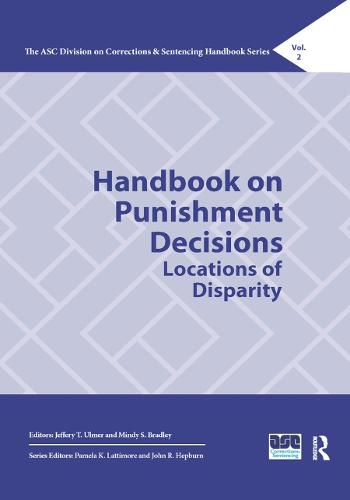Readings Newsletter
Become a Readings Member to make your shopping experience even easier.
Sign in or sign up for free!
You’re not far away from qualifying for FREE standard shipping within Australia
You’ve qualified for FREE standard shipping within Australia
The cart is loading…






Handbook on Punishment Decisions: Locations of Disparity provides a comprehensive assessment of the current knowledge on sites of disparity in punishment decision-making. This collection of essays and reports of original research defines disparity broadly to include the intersection of race/ethnicity, gender, age, citizenship/immigration status, and socioeconomic status, and it examines dimensions such as how pretrial or guilty plea processes shape exposure to punishment, how different types of sentencing decisions and/or policy structures (sentencing guidelines, mandatory minimums, risk assessment tools) might shape and condition disparity, and how post-sentencing decisions involving probation and parole contribute to inequalities. The sixteen contributions pull together what we know and what we don’t about punishment decision-making and plow new ground for further advances in the field.
The ASC Division on Corrections & Sentencing Handbook Series publishes volumes on topics ranging from violence risk assessment to specialty courts for drug users, veterans, or people with mental illness. Each thematic volume focuses on a single topical issue that intersects with corrections and sentencing research.
$9.00 standard shipping within Australia
FREE standard shipping within Australia for orders over $100.00
Express & International shipping calculated at checkout
Handbook on Punishment Decisions: Locations of Disparity provides a comprehensive assessment of the current knowledge on sites of disparity in punishment decision-making. This collection of essays and reports of original research defines disparity broadly to include the intersection of race/ethnicity, gender, age, citizenship/immigration status, and socioeconomic status, and it examines dimensions such as how pretrial or guilty plea processes shape exposure to punishment, how different types of sentencing decisions and/or policy structures (sentencing guidelines, mandatory minimums, risk assessment tools) might shape and condition disparity, and how post-sentencing decisions involving probation and parole contribute to inequalities. The sixteen contributions pull together what we know and what we don’t about punishment decision-making and plow new ground for further advances in the field.
The ASC Division on Corrections & Sentencing Handbook Series publishes volumes on topics ranging from violence risk assessment to specialty courts for drug users, veterans, or people with mental illness. Each thematic volume focuses on a single topical issue that intersects with corrections and sentencing research.